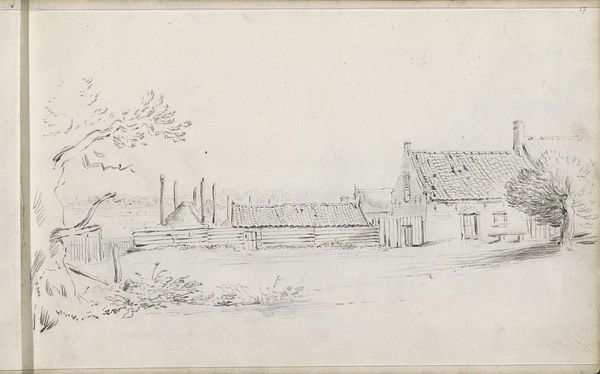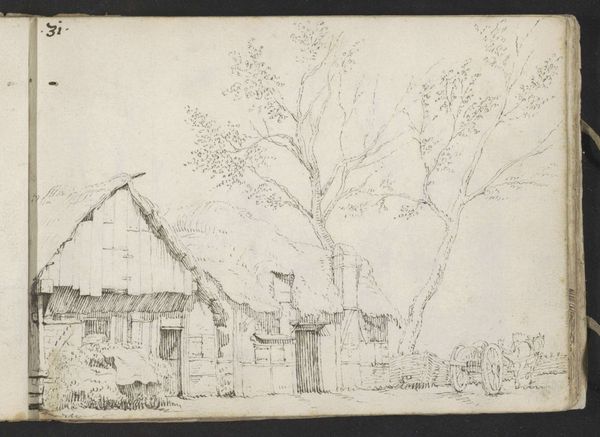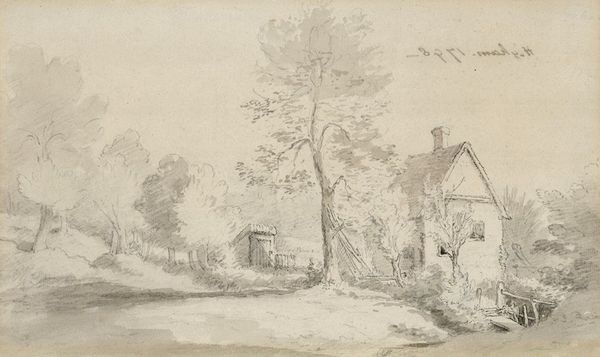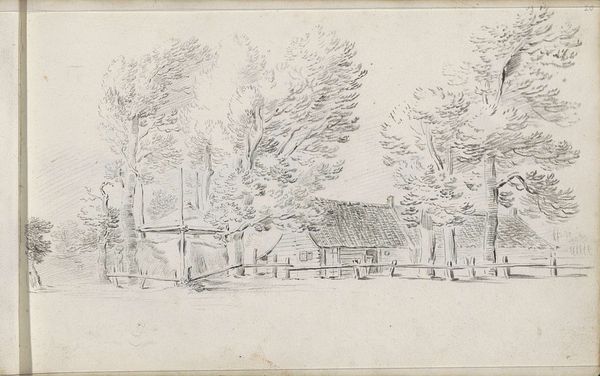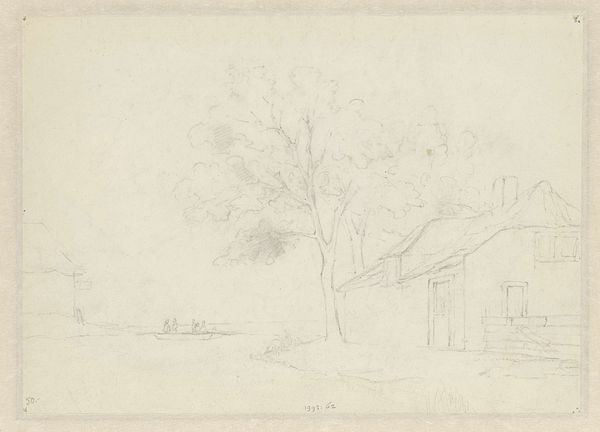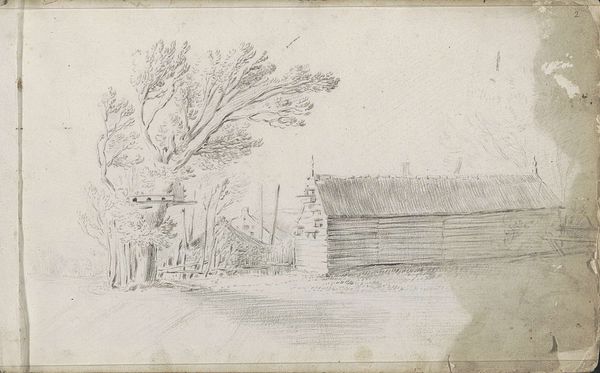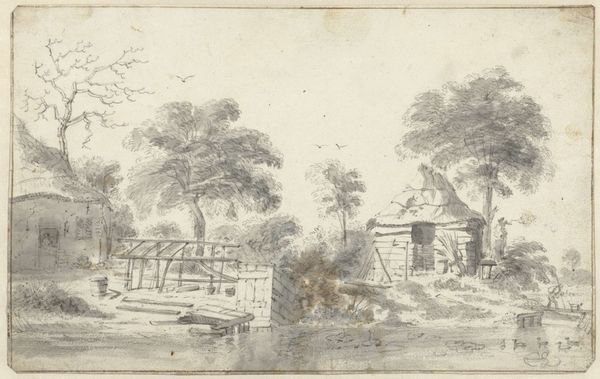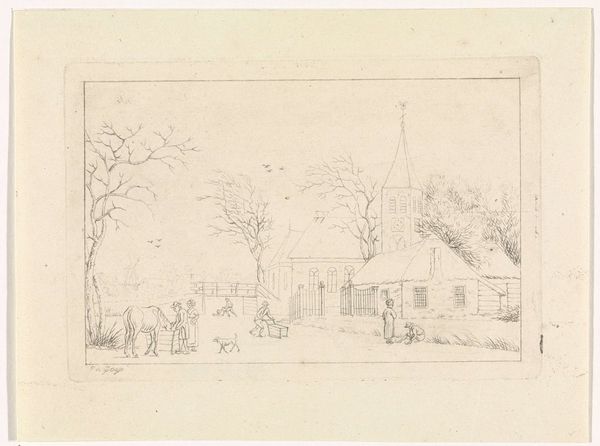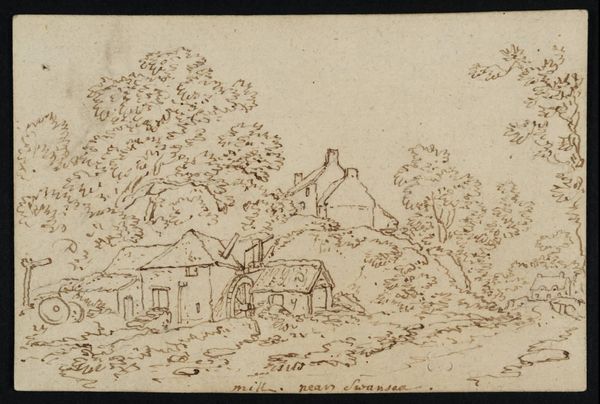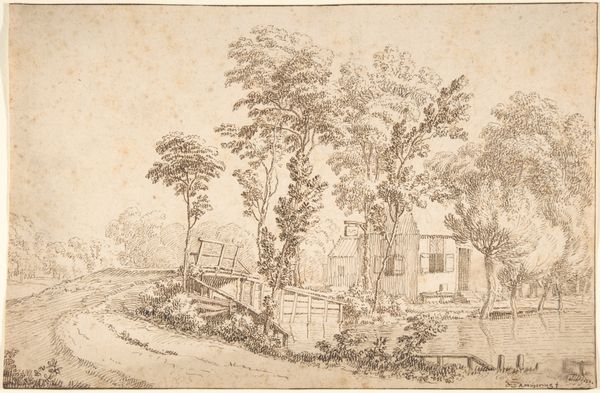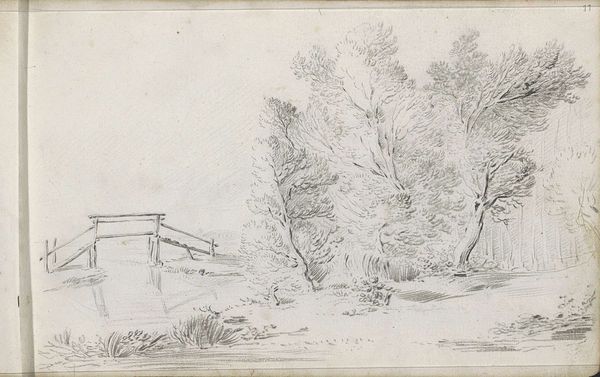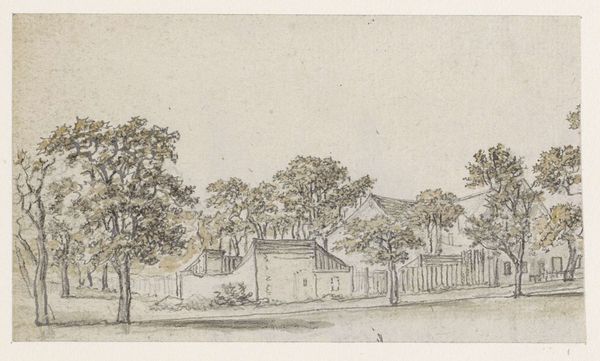
drawing, etching, ink, architecture
#
drawing
#
baroque
#
dutch-golden-age
#
etching
#
landscape
#
etching
#
ink
#
architecture
Dimensions: height 126 mm, width 200 mm
Copyright: Rijks Museum: Open Domain
Editor: This is Cornelis Pronk's "Kerk in het dorp Cabauw," a drawing made sometime between 1701 and 1759. It's a detailed landscape sketch, rendered in ink, featuring a church and some figures. What stands out to me is how delicate the lines are; it creates this almost ethereal, peaceful feeling. How do you interpret this work, especially considering its historical context? Curator: That delicate rendering speaks volumes. The Dutch Golden Age, while celebrated for its prosperity and artistic achievements, also rigidly enforced social hierarchies, deeply impacting gender roles, labor practices, and religious freedom. Pronk's seemingly simple depiction of a village church actually subtly reflects the limited scope of women in Dutch society and even the restrictive boundaries of religious expression at the time. Editor: Restrictive, how so? The church seems central. Curator: Exactly, its central *visual* position normalizes its dominance. Consider the position of women. Are they active protagonists, or background adornments? Were women even allowed leadership roles? Did the consolidation of religious authority in this place erase older, perhaps indigenous spiritual practices centered on women? Editor: I never thought of it that way! I was just focusing on the aesthetic beauty of the drawing itself, not what it subtly reveals about the power dynamics of the period. Curator: It’s crucial to remember that art doesn’t exist in a vacuum. The seemingly innocent portrayal of a church is imbued with cultural assumptions and power relations that shaped everyday lives and artistic production. Visual language reflects the norms. What do we do with the silences of women and queer people? Editor: So, even a landscape drawing like this can offer a commentary on social issues, especially when we examine the cultural values embedded within it. It really challenges the idea of art being apolitical! Curator: Precisely. Art can give space to, but it can also constrain diverse voices. The lack of visible marginalized communities, perhaps, implies their exclusion, an erasure, that reproduces and reinforces an imbalanced power structure. Examining visual representation of absence is an incredibly powerful activist intervention.
Comments
No comments
Be the first to comment and join the conversation on the ultimate creative platform.
